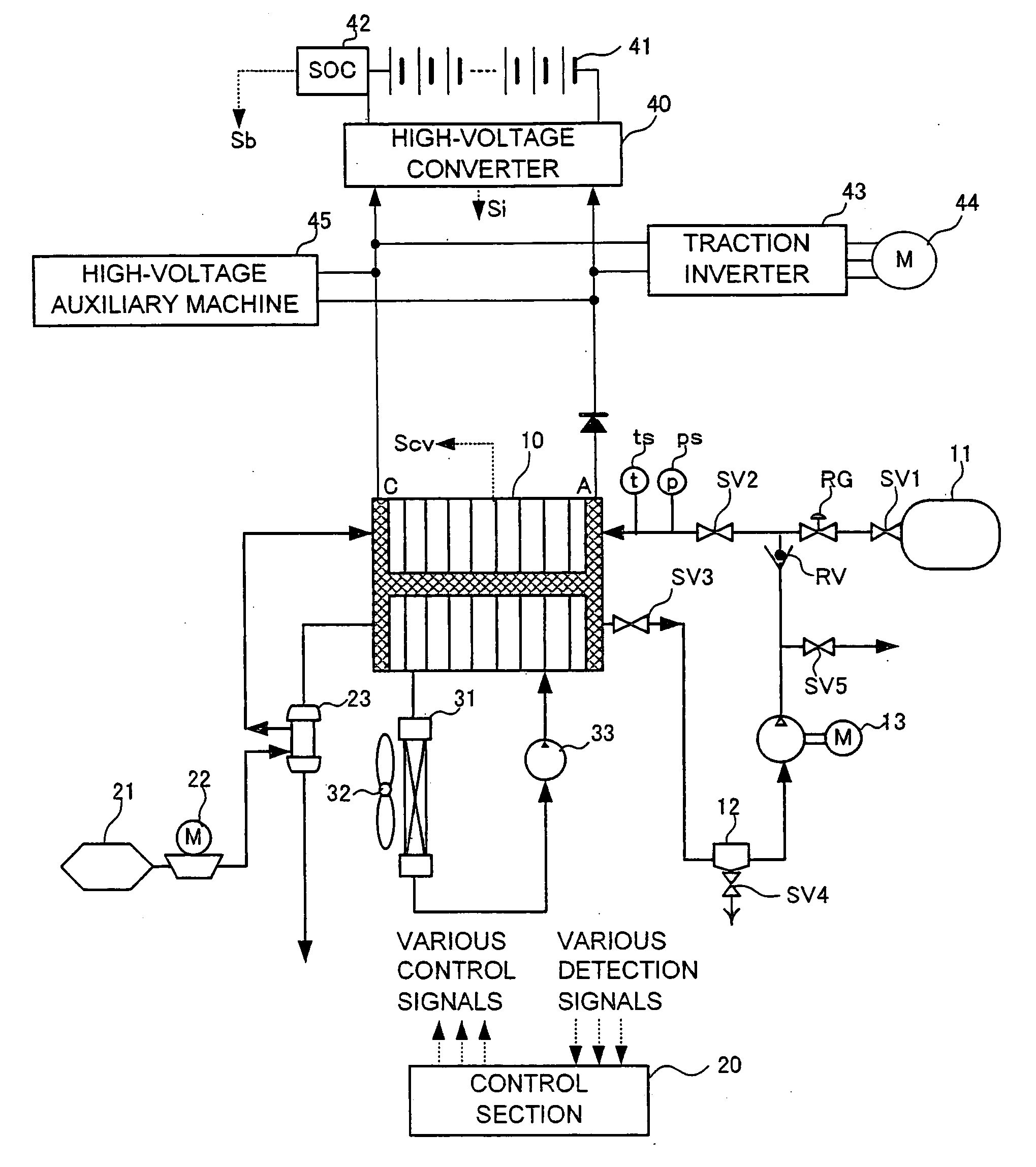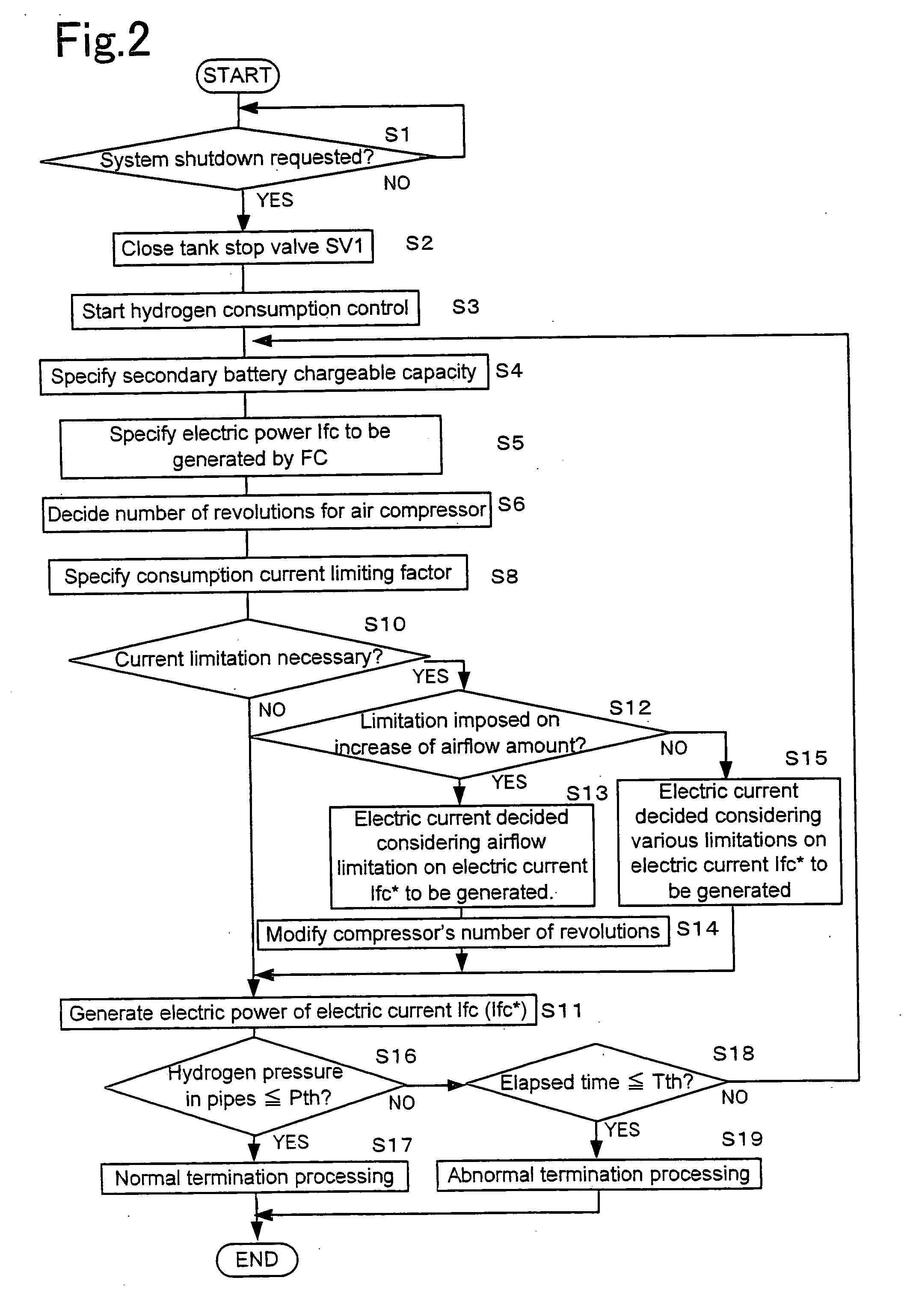Fuel cell system and method for removing residual fuel gas
a fuel cell and residual fuel technology, applied in the field of fuel cell systems, to achieve the effect of avoiding excessive drying of single cells, and avoiding excessive heat generation
- Summary
- Abstract
- Description
- Claims
- Application Information
AI Technical Summary
Benefits of technology
Problems solved by technology
Method used
Image
Examples
Embodiment Construction
[0037] A preferred embodiment of the invention is described below with reference to the attached drawings.
[0038] The embodiment is a fuel cell system mounted on a mobile object such as an electric automobile, to which the electric power limitation method of the invention is applied. The embodiment described below is just one example of the invention, and the invention can be used without being limited to the following embodiment.
[0039]FIG. 5 shows functional blocks of the invention. As shown in FIG. 5, in a fuel cell system 1 according to the invention for having a fuel cell 6 generate electric power by using residual fuel gas during shutdown, a consumption means 3 is made to consume at least part of the surplus electric power generated as a result of power generation by the fuel cell 6. When the consumption means 3 is made to consume the electric power, the limitation in the system 1 is detected and the electric power to be generated is changed depending on the power generation s...
PUM
| Property | Measurement | Unit |
|---|---|---|
| voltage | aaaaa | aaaaa |
| electric power | aaaaa | aaaaa |
| pressure | aaaaa | aaaaa |
Abstract
Description
Claims
Application Information
 Login to View More
Login to View More - R&D
- Intellectual Property
- Life Sciences
- Materials
- Tech Scout
- Unparalleled Data Quality
- Higher Quality Content
- 60% Fewer Hallucinations
Browse by: Latest US Patents, China's latest patents, Technical Efficacy Thesaurus, Application Domain, Technology Topic, Popular Technical Reports.
© 2025 PatSnap. All rights reserved.Legal|Privacy policy|Modern Slavery Act Transparency Statement|Sitemap|About US| Contact US: help@patsnap.com



